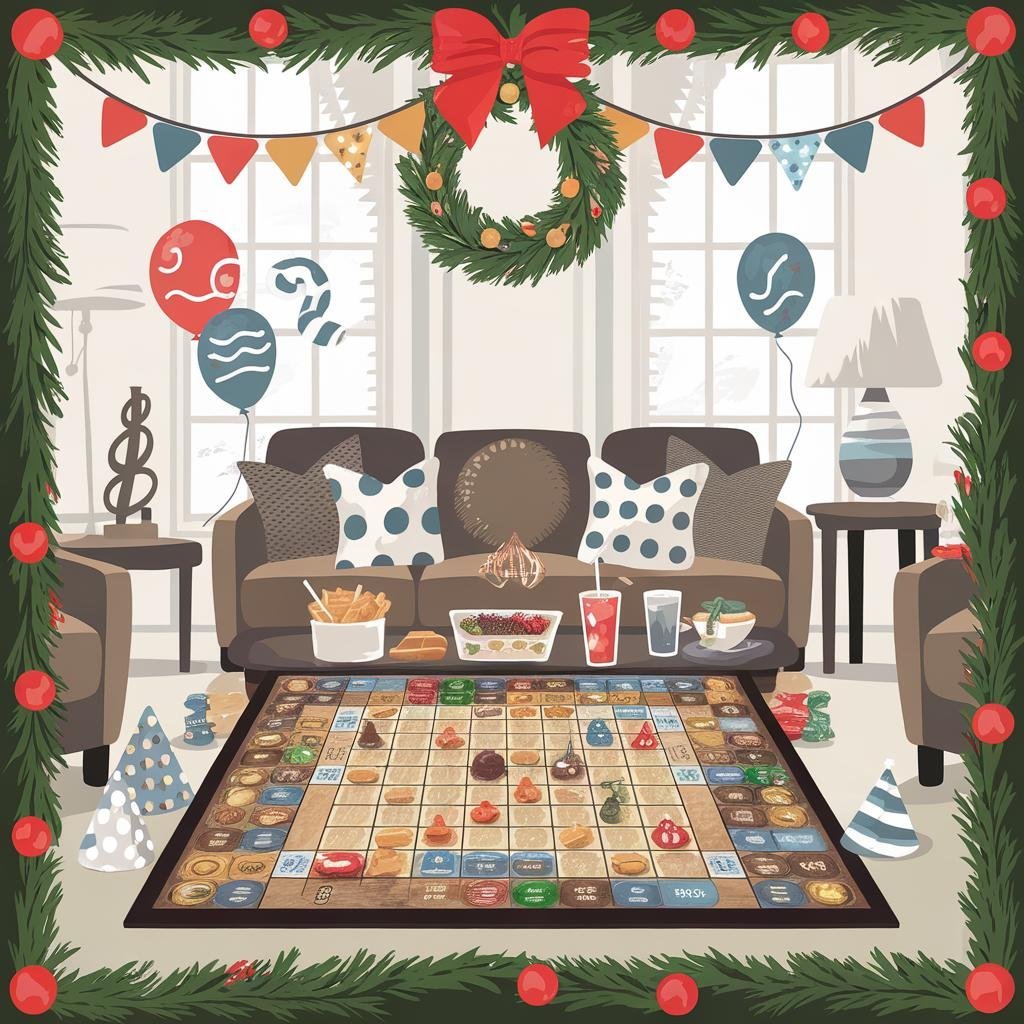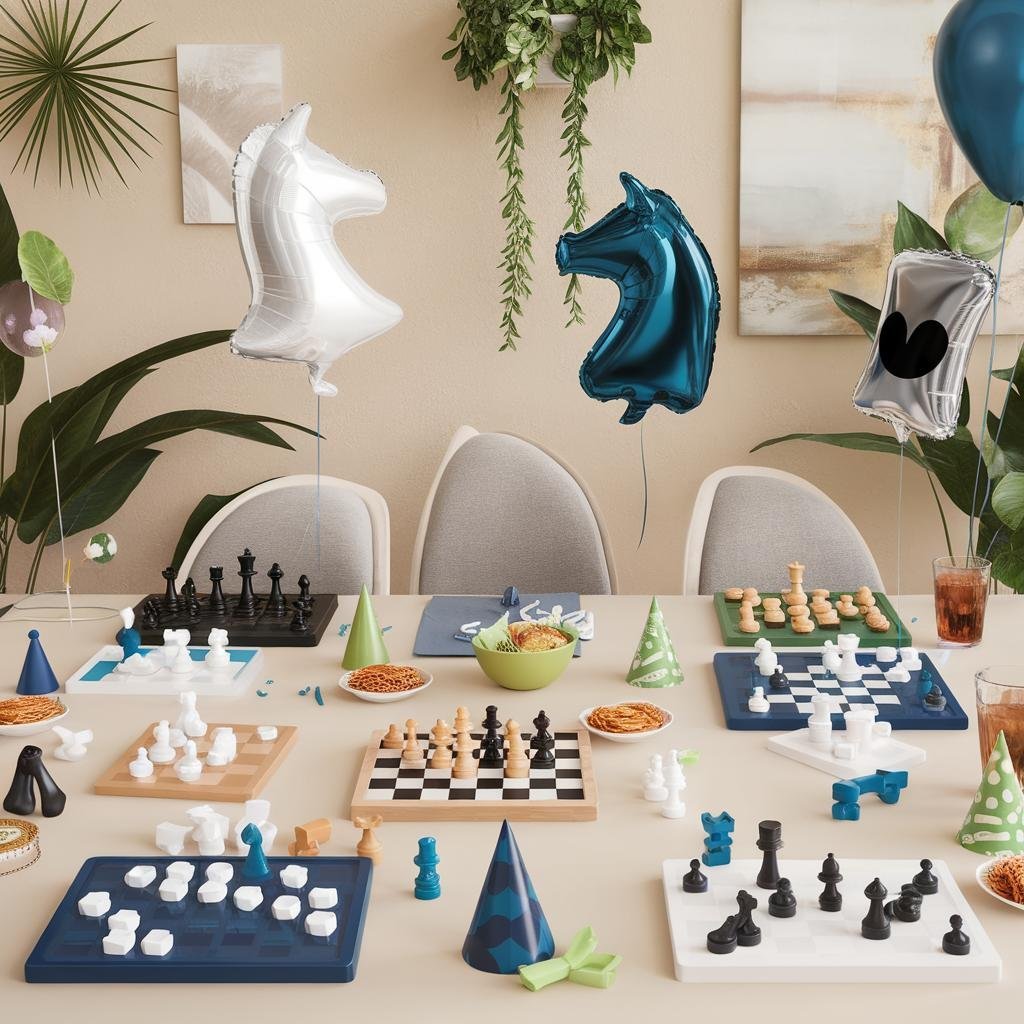Disclosure: This Post Contains Affiliate Links; We earn a commission on purchases.
Welcome to a world of strategic thinking and labyrinthine conquest with Quoridor! Developed by Mirko Marchesi and published by Gigamic Games, Quoridor is a captivating board game that will put your skills to the test. In this article, we’ll explore essential tips and tactics to help you master the game and develop winning strategies. Whether you’re a seasoned player looking for an edge or new to the game and eager to learn, we’ve got you covered.
Key Takeaways:
- Quoridor is a strategic board game that challenges players to navigate a labyrinth and outmaneuver opponents to reach the opposite side of the board.
- Understanding the rules of Quoridor is crucial, including pawn movements, wall placements, and the goal of capturing victory by being the first to reach the opposite side.
- The history of Quoridor dates back to an earlier game called Blockade, and it has gained worldwide popularity since its release in 1997.
- Effective wall placement, strategic thinking, and spatial reasoning are key components of developing a winning Quoridor strategy.
- Quoridor is not only a game but also a valuable tool for enhancing cognitive skills such as problem-solving, critical thinking, and pattern recognition.
The Rules of Quoridor
Quoridor is a strategic board game that is played on a 9×9 game board. Each player is represented by a pawn, and the goal is to be the first player to move their pawn to the opposite side of the board. The game also features walls that can be placed to block the path of opponents.
In Quoridor, pawns can move to any space on the board at a right angle. They can also jump over other pawns if they are adjacent. However, walls cannot be jumped over and once placed, they cannot be moved or removed during the game.
The rules of Quoridor are simple, but the strategic possibilities are endless. Understanding how to navigate the game board, utilize your pawns effectively, and strategically place walls is essential for success in Quoridor.
To give you a better idea of the game, here is a visualization of a Quoridor game board:
Now that you have a basic understanding of the rules of Quoridor and what the game board looks like, you’re ready to dive deeper into strategies and tactics in the following sections.The History of QuoridorQuoridor has an interesting history, with its origins dating back to an earlier game called Blockade, which was invented by Philip Slater in 1975. Building upon the concept of Blockade, renowned game designer Mirko Marchesi created a new version of the game called Pinko Pallino in 1995. However, it was the release of Quoridor in 1997 that truly introduced the game to the world and cemented its place in board game history.Quoridor quickly gained popularity worldwide, captivating players with its unique gameplay mechanics and strategic challenges. The game’s innovative concept and addictive nature earned it numerous accolades, including the prestigious Mensa Mind Game award, further solidifying its status as a beloved game among enthusiasts.Notation Systems in QuoridorWhen it comes to playing Quoridor, effective communication and analysis go hand in hand. That’s where notation systems come into play, providing players with a standardized way to represent the game board, pawn movements, wall placements, and game positions. Quoridor offers various notation systems, each with its own unique format. Let’s explore three popular notation systems used by Quoridor players:1. ASCII Diagrams:ASCII diagrams use characters and symbols to depict the Quoridor game board, pawns, and walls. It allows for a visual representation of the game, making it easier to understand and analyze different scenarios. Here’s an example of an ASCII diagram:https://www.youtube.com/watch?v=_p9PF6NPvMs2. NESW Notation:NESW notation, derived from the cardinal directions (North, East, South, West), is primarily used to specify pawn movements in Quoridor. It represents the direction in which a pawn moves on the game board. For instance, N signifies moving north, E signifies moving east, S signifies moving south, and W signifies moving west.3. Algebraic Notation:Similar to chess notation, algebraic notation in Quoridor uses a combination of letters and numbers to represent pawn movements and wall placements. Each space on the game board is assigned a unique alphanumeric coordinate, helping players identify specific positions and moves. For example, a pawn moving from e2 to e4 would be denoted as e2-e4.
“The notation systems in Quoridor play a vital role in understanding and analyzing the game. Whether you’re studying strategies, reviewing previous games, or sharing your own gameplay, these systems provide a universal language for Quoridor enthusiasts.”
By utilizing notation systems such as ASCII diagrams, NESW notation, and algebraic notation, Quoridor players can effectively communicate and analyze various aspects of the game. Understanding these systems helps in studying strategies, reviewing gameplay, and enhancing overall gameplay performance.Strategies for the Opening PhaseThe opening phase in Quoridor is a critical stage where players lay the groundwork for their long-term plans. Making strategic moves at this early stage can significantly impact the outcome of the game. There are two main approaches to consider: orthodox openings and unorthodox openings.Orthodox OpeningsOrthodox openings in Quoridor focus on advancing pawns towards the center of the board. This strategy aims to create a central position from which the player can easily access any part of the board. By occupying the middle space and establishing control, an orthodox opening sets the stage for future maneuvers and allows the player to react to opponent movements effectively.Unorthodox OpeningsUnorthodox openings in Quoridor involve unique wall placements that deviate from conventional strategies. This approach aims to surprise opponents and disrupt their initial plans. By strategically blocking certain paths and creating obstacles, unorthodox openings can hinder opponents’ progress and give the player an advantageous position on the board.Below are some popular opening strategies in Quoridor:
- Reed Opening: In this opening, the player places walls on the second row and advances their pawn towards the center. It allows for quick expansion and flexibility in subsequent moves.
- Shiller Opening: The Shiller opening involves placing walls diagonally across the board, obstructing opponent paths. This strategy forces opponents to take longer routes and creates opportunities for the player to advance their pawn more quickly.
- Stonewall Formation: The Stonewall formation focuses on creating a solid wall structure near the starting position. This strategy aims to defend against opponents’ advances while steadily progressing towards the opposite side of the board.
The choice between orthodox and unorthodox openings depends on personal playing style and the specific game situation. Experimenting with different strategies can help players discover their preferred approach and increase their chances of success in the opening phase.Strategies for the Middle GameOnce the opening phase has concluded, players are thrust into the middle game of Quoridor, where careful pawn positioning and strategic wall placement are paramount. This phase requires players to strike a delicate balance between offensive and defensive moves, hindering opponents while making progress towards their own goal.One essential aspect of the middle game is pawn positioning. Players should aim to position their pawns strategically, creating obstacles for their opponents and opening up advantageous paths for their own advancement. By strategically placing pawns, players can control the board and limit their opponents’ options.Another crucial element of the middle game is wall placement. Walls can be powerful tools for blocking paths and creating tactical advantages. By strategically placing walls, players can force their opponents into undesirable positions or create detours that waste valuable moves.Anticipating opponent moves is also crucial in the middle game. By paying close attention to the positioning of opponents’ pawns and walls, players can predict their opponents’ strategies and plan their own moves accordingly. This allows for better decision-making and the ability to counter opponents effectively.Some effective strategies for the middle game include:
- Blocking paths to impede opponents’ progress
- Creating tactical walls to restrict opponents’ movement
- Anticipating opponent moves and planning counter moves
The middle game is a critical phase in Quoridor, where players must demonstrate their tactical acumen and strategic thinking. By mastering pawn positioning, strategic wall placement, and anticipating opponent moves, players can gain a significant advantage as they progress towards victory.Continue reading to discover the strategies for the endgame in Quoridor.Strategies for the EndgameOnce the endgame phase of Quoridor is reached, where one player has fewer than three pawns, employing effective strategies becomes crucial. This phase involves careful pawn management and optimizing the path to victory. By planning each move with precision, players can maximize their remaining pawns’ mobility and strategically position themselves on the board.Quoridor Endgame StrategiesIn the endgame phase, players must carefully consider their pawn movements and wall placements to gain an advantage. Here are a few key strategies to keep in mind:
- Protect your pawns: Safeguard your pawns by positioning them strategically, making it difficult for opponents to hinder their progress.
- Block opponents: Utilize walls to impede your opponents’ advancements, forcing them to take longer routes and buy yourself more time.
- Create barriers: Place walls strategically to create barriers that block opponents’ paths, limiting their options and increasing your chances of victory.
- Conserve walls: Use walls judiciously and save them for critical moments when their placement can have the greatest impact on the game’s outcome.
By implementing these endgame strategies, players can optimize their chances of success and navigate the maze-like board with greater efficiency.Endgame Pawn ManagementManaging your pawns strategically in the endgame is essential for gaining an upper hand. Consider the following pawn management tips:
- Keep pawns spread out: Maintain an even distribution of your remaining pawns across the board to cover more ground and increase your options.
- Coordinate pawn movements: Plan your pawn movements intelligently, coordinating them to create opportunities while minimizing risk.
- Anticipate opponent moves: Predict your opponents’ actions and adapt your pawn movements accordingly to counter their strategies and gain an advantage.
- Rethink the use of jumps: In the endgame, jumps should be used thoughtfully, considering the long-term consequences of pawn positioning.
By effectively managing your pawns, you can maximize their potential and increase your chances of reaching the opposite side ahead of your opponent.Path Optimization in the EndgameOptimizing your path to victory is crucial during the endgame phase. Consider these tips to optimize your gameplay:
- Look for shortcuts: Identify potential shortcuts or alternative paths that can expedite your progress and confound your opponents.
- Anticipate wall placements: Predict where your opponents are likely to place walls and adjust your path accordingly, avoiding potential obstacles and maintaining a clear route to victory.
- Plan multiple moves ahead: Foreseeing future moves is vital in the endgame. Consider multiple possibilities and choose a plan that allows for flexibility and adaptability.
- React to changing board dynamics: Stay attuned to the changing dynamics of the board and adjust your path optimization strategy accordingly to maintain a competitive edge.
By optimizing your path in the endgame, you can maneuver through the labyrinthine Quoridor board with finesse, securing victory in the face of challenging circumstances.Tips for Effective Wall PlacementWall placement is a crucial aspect of Quoridor strategy. Effective wall placement can block opponents’ paths, create long detours, and control the flow of the game. To elevate your wall placement skills and gain an advantage over your opponents, consider these tips:
- Blocking Key Intersections: Identify critical intersections on the board where blocking the path can significantly impede your opponent’s progress. Placing walls strategically at these points can force them to take longer routes.
- Creating Bottlenecks: Look for opportunities to create bottlenecks by placing walls in narrow passages or constricted areas. This tactic limits your opponent’s options and allows you to maintain control over the game’s pace.
- Forcing Suboptimal Paths: Predict your opponent’s potential path and place walls strategically to redirect them into suboptimal routes. By steering their movement, you can gain a tactical advantage and dictate the flow of the game.
To illustrate the effectiveness of wall placement in Quoridor, consider the example below:By placing a wall strategically, Player 1 creates a detour for Player 2, increasing their chances of reaching the opposite side first. This demonstration highlights the impact of effective wall placement and its role in controlling the game.Remember, mastering the art of wall placement requires practice and strategic thinking. By implementing these tips, you can enhance your Quoridor skills and improve your chances of success.Improving Spatial Reasoning and Strategic ThinkingQuoridor is not just a game; it is a tool that can enhance your spatial reasoning and strategic thinking skills. By engaging in this thrilling board game, players can develop essential cognitive abilities, including problem-solving, critical thinking, and pattern recognition.Quoridor requires players to analyze the board, anticipate their opponents’ moves, and make optimal decisions to achieve their goals. This process stimulates the brain and enhances cognitive skills, making it an ideal game for individuals looking to sharpen their mental acuity.The strategic nature of Quoridor challenges players to think several steps ahead and consider various scenarios. This exercise in strategic thinking is valuable in real-life situations as well, as it encourages individuals to evaluate different options, assess risks, and devise effective strategies to achieve their objectives.When playing Quoridor, you must consider the best routes to navigate through the labyrinthine board while blocking your opponents’ progress. This active engagement with spatial reasoning improves your ability to visualize and manipulate objects and spaces mentally, enhancing your spatial intelligence.
Quoridor provides a platform for players to exercise their spatial reasoning and strategic thinking skills, leading to improved cognitive abilities and honed decision-making skills.
In addition, Quoridor fosters critical thinking as players must evaluate the consequences of their moves and anticipate their opponents’ reactions. This ability to analyze situations, assess risks, and make well-informed decisions is transferable to various aspects of life, from problem-solving in personal and professional settings to strategic planning in different endeavors.Furthermore, Quoridor cultivates pattern recognition skills as players identify recurring sequences and strategies employed by opponents. Recognizing and utilizing patterns effectively can provide significant advantages, enabling players to predict their opponents’ moves and adjust their own strategies accordingly.Benefits of Playing Quoridor:
- Enhanced spatial reasoning and visualization abilities
- Improved strategic thinking and decision-making skills
- Developed critical thinking and problem-solving capabilities
- Refined pattern recognition skills
Quoridor is more than just a game; it is a cognitive workout that challenges your mind, promotes intellectual growth, and cultivates essential skills that are valuable in various aspects of life. As you continue to play Quoridor, you will notice an improvement in your spatial reasoning, strategic thinking, and overall cognitive abilities.So gather your friends and family, set up the Quoridor board, and embark on an exciting journey of intellectual development and labyrinthine conquest!Fun for the Whole FamilyQuoridor is not just a game for serious strategists – it’s also a fantastic choice for family game nights and gatherings with friends. With its simple rules and strategic depth, Quoridor offers an engaging and challenging experience that can be enjoyed by players of all ages.Quoridor’s versatility makes it a great addition to any social gathering. Whether you’re planning a cozy game night with your loved ones or hosting a get-together with friends, Quoridor provides endless hours of fun and excitement. Gather around the game board, strategize, and navigate the labyrinth together, creating memorable moments and fostering friendly competition.Playing Quoridor as a family game not only strengthens bonds but also promotes a sense of teamwork, problem-solving, and critical thinking. It’s an excellent opportunity to engage in healthy competition while nurturing valuable skills that go beyond the game itself.
“Quoridor is the perfect game for our family game nights. It’s easy enough for our younger kids to grasp, but still challenging for the adults. We love the strategic element and the excitement of trying to outmaneuver each other. It’s become a beloved tradition in our household!” – The Smith Family
Gather your loved ones, set up the game board, and embark on an exciting journey of strategy and navigation. Quoridor’s multiplayer mode allows everyone to participate simultaneously, enhancing the interactive and competitive experience. With each player plotting their moves and strategically placing walls, the game becomes a thrilling race to reach the opposite side of the board.Quoridor’s simple yet addictive gameplay ensures that everyone can quickly learn and join in on the fun. Its replay value is unmatched, as no two games are ever the same. With each session, players will discover new tactics, develop their strategies, and unlock the full potential of their spatial reasoning and strategic thinking abilities.Whether you’re spending a quiet evening at home or hosting a lively game night, Quoridor is a game that guarantees laughter, excitement, and the creation of lasting memories. Don’t miss out on the opportunity to introduce Quoridor to your family and friends – it’s a game that will surely become a staple in your game collection.The Legacy of QuoridorQuoridor has left a lasting legacy in the world of board games. Its popularity has spread globally, captivating players of all ages with its strategic gameplay and labyrinthine challenges. This timeless game has stood the test of time, remaining a beloved choice for game enthusiasts and casual players alike.Recognized for its ability to promote critical thinking and strategic skills, Quoridor has gained a reputation as an educational tool in various institutions. Its unique gameplay fosters cognitive development, enhancing spatial reasoning, problem-solving, and decision-making abilities in students. The game’s immersive experience stimulates learning and provides an engaging platform for exploration and growth.With its rich legacy and widespread popularity, it’s no wonder that Quoridor continues to be cherished by players worldwide. Experience the thrill of this iconic game and unlock your strategic potential.Testimonials:
“Quoridor’s legacy lies not only in its entertainment value but also in its ability to stimulate critical thinking and problem-solving skills.” – Sarah Johnson, Educational Psychologist
Benefits of Quoridor:
- Enhances spatial reasoning and strategic thinking
- Improves problem-solving and critical thinking skills
- Promotes cognitive development in students
- Offers an immersive and engaging educational experience
ConclusionQuoridor is much more than just a board game. It is an immersive experience that challenges your strategic thinking, spatial reasoning, and decision-making skills. By mastering the game’s rules and implementing effective strategies, you can elevate your play and outmaneuver your opponents.Whether you are a seasoned Quoridor player or new to the game, the tips and tactics provided in this article will help you enhance your Quoridor strategy and increase your chances of success. The opening phase requires careful planning and execution, while the middle game demands a balance between offense and defense.In the endgame, managing your pawns and optimizing your path becomes crucial. Effective wall placement can be a game-changer, allowing you to control the flow of the game and create obstacles for your opponents.So why wait? Put your skills to the test and embark on an exciting journey of labyrinthine conquest. Play Quoridor today and experience the thrill of strategizing, outmaneuvering, and ultimately emerging as the victorious player. Get ready to immerse yourself in the captivating world of Quoridor.
| Quoridor Awards | Year | |
|---|---|---|
| Mensa Mind Game award | 1997 | |
| Games Magazine Game of the Year | 1997 | |
| Spel van’t Jaar (Dutch Game of the Year) | 1997 | |
| Dr. Toy’s Best Classic Toys | 1997 | |
| Opening Strategy | Description | |
| Reed Opening | Player places walls on the second row and advances their pawn towards the center. | |
| Shiller Opening | Player places walls diagonally across the board, obstructing opponent paths. | |
| Stonewall Formation | Player focuses on creating a solid wall structure near the starting position to defend and progress simultaneously. | |
| Board Position | Before Wall Placement | After Wall Placement |
| Player 1 | ||
| Player 2 |  |  |
| Key Features | Benefits | |
| Simple rules | Easy for all ages to learn | |
| Strategic gameplay | Develops critical thinking and problem-solving skills | |
| Multiplayer mode | Engaging experience for everyone involved | |
| Replayability | Endless possibilities for new strategies and tactics | |
| Enhanced social interaction | Brings family and friends together for quality time |

As the founder of Friends Game Night, Ryan channels his enthusiasm for gaming into a platform that celebrates the magic of gathering friends around the digital or physical tabletop. Through his website, Ryan shares insightful articles, reviews, and recommendations, aiming to inspire others to create their own memorable gaming moments.
Subscribe to Our Newsletter










